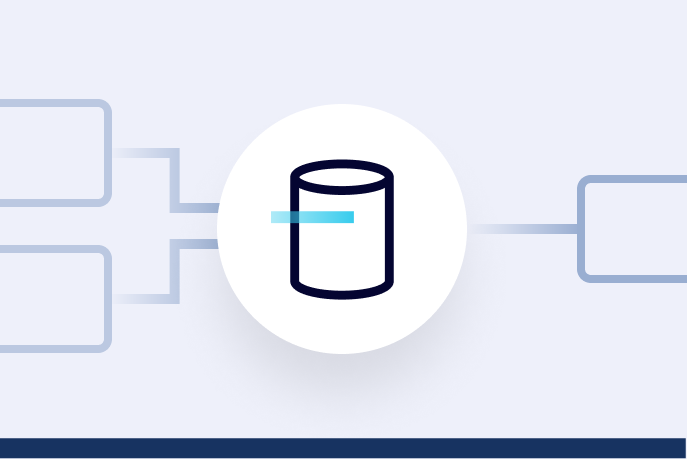Hands-on Tableflow Workshop: Kafka-to-Delta Tables & AI Agents | Register Now
The 5 Tenets of Data Integration
These days, data is at the core of nearly every business decision. But even as the sheer amount of data and formats have skyrocketed, data sources have become more fragmented and distributed than ever. That makes it all the more important to have a strong data integration strategy in order to get a complete view of your business.
What is Data Integration?
Data integration is the process of combining data into one unified view for more valuable use by the business. The process starts with data ingestion, cleansing, mapping, and/or transformation, and moving into storage with the goal of complete integration across all apps, systems, and locations to boost data quality and reliability.
Why Data Integration Matters
Integration is an essential part of data pipeline design, from ingestion and processing to transformation and storage. It involves stitching together different subsystems to create a more extensive, comprehensive, and standardized system between multiple teams. Not only does data integration ensure that all of an organization’s data is readily available to all the systems and services that need it, it also brings a myriad of benefits.
Benefits of Data Integration
Help businesses increase operational efficiency and make better decisions
Improve customer experience—if it’s done right
Create a single unified view of data and layer of connectivity
As a result, data integration gives a full overview of business processes and performance, whether it’s sales and marketing, website analytics, or customer service.
In the end, the goal of successful data integration is to put internal departments on the same page in terms of strategies and business decisions. When this level of synergy is achieved, organizations are able to arrive at actionable and compelling insights for short- and long-term success.
Data Integration Challenges
Two recent trends have made data integration increasingly difficult.
First, our definition of data has broadened greatly. In the past, businesses would have considered data to be purely transactional—things like orders, users, and products. This data would have been stored in tables in relational databases.
Now the list includes event data, which records not just things that are, but also things that happen: website page views, character actions in a game, hardware errors, and much more. Event data complicates the traditional data integration approach in large part because it tends to be orders of magnitudes larger than transactional data.
Second, the variety of specialized data systems has exploded in recent years for use cases like online storage, batch processing, and search. The dual challenge of getting more kinds of data into more systems, and in real time, can create problems. Long gone are the days of legacy extract, transform, load (ETL) tools, as organizations now require up-to-the-minute insights and event-driven programming to ensure quality, relevant, accurate data.
With this in mind, here are five key must-haves that will help you maximize the benefits of data integration.
1. Enhanced Data Integrity and Data Quality
Data that is inaccurate, outdated, or simply unavailable can harm customer experience and operational efficiency. It isn’t useful for generating reliable insights, improving collaboration, or making better business decisions. That’s why companies need accurate data—but with the volume of data growing every year, it can be hard to measure, monitor, and understand this barrage of information. A complete data integration solution makes insight-rich data readily available without sacrificing data integrity or quality.
2. Seamless Knowledge Transfer Between Systems
Different businesses have different needs for systems specific to their industry. For instance, a restaurant needs to track perishable food, while a retailer needs to manage customer relationships. Each of these goals requires different methods of handling data. But having a wide variety of services can create information silos, with data categorized by operation. This can create barriers between departments within a company. Data integration lets departments exchange data seamlessly and, when necessary, connect with external partners like manufacturers, suppliers, and distributors.
3. Easily Available and Fast Connections Between Data Stores
Before the days of automated integration software, teams had to wait for information to be compiled manually. This painstaking routine required complex coding to connect each subsystem separately, and risked making the data irrelevant by the time it was consolidated and transferred to management teams. The process was also susceptible to human error and became hard to maintain as the number of interconnections increased.
Modern cloud data integration solutions like Confluent Cloud enable smooth data sharing by easily connecting all systems, continuously updating the second an event happens. By combining real-time data streams, pre-built integrations, and event-driven programming, Confluent enables companies to access, manage, and capitalize on real-time data like real-time inventory levels, website activity, and traffic data, making it easier to keep up with the rapid pace of change.
4. Increased Efficiency and ROI
Being able to access all the information you need at any time cuts down on errors and significantly increases efficiency levels. Data integration helps companies increase sales and revenue by better allocating resources to facilitate growth. For example, sales teams can see all the data they need and apply these insights to improve response times and drive upsell opportunities.
5. Better Customer and Partner Experiences
If employees don’t have to enter data manually across multiple systems, they can spend their time actually using it. Data integration frees you to focus on your customers’ needs and wants—and deliver them. This is the full benefit of system integration: better relationships, more opportunities, and greater business growth.
How Confluent’s Streaming Integration Platform Can Help
From real-time data integration and insights to streaming data pipelines, Confluent enables a single source of truth for all your data. With 120+ pre-built connectors, streaming data governance, and multi-cloud data flow, you can easily ingest, aggregate, and transform data streams in-flight from any system, application, or device for seamless integration at any scale.
Avez-vous aimé cet article de blog ? Partagez-le !
Abonnez-vous au blog Confluent
Streaming Data Pipelines: Reinventing Data Flows
The worlds of data integration and data pipelines are changing in ways that are highly reminiscent of the profound changes I witnessed in application and service development over the last twenty years.
Getting Started with Database Modernization
For many companies, the journey to the cloud started as a way to take advantage of the cost savings, speed, and scale of cloud computing. You may have already started […]

